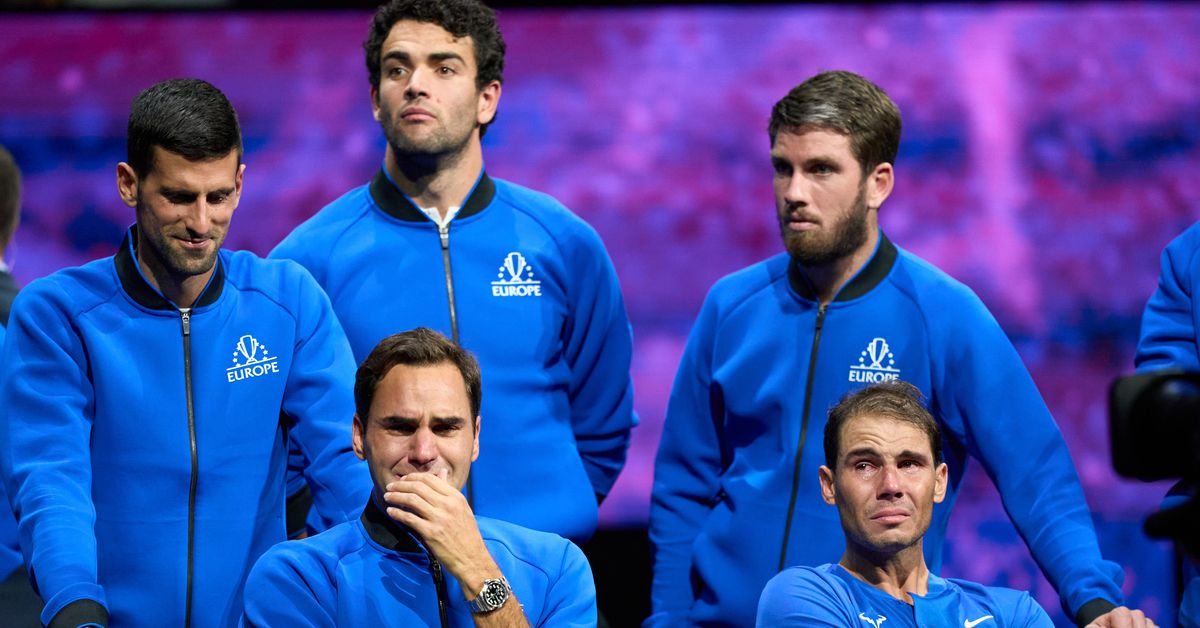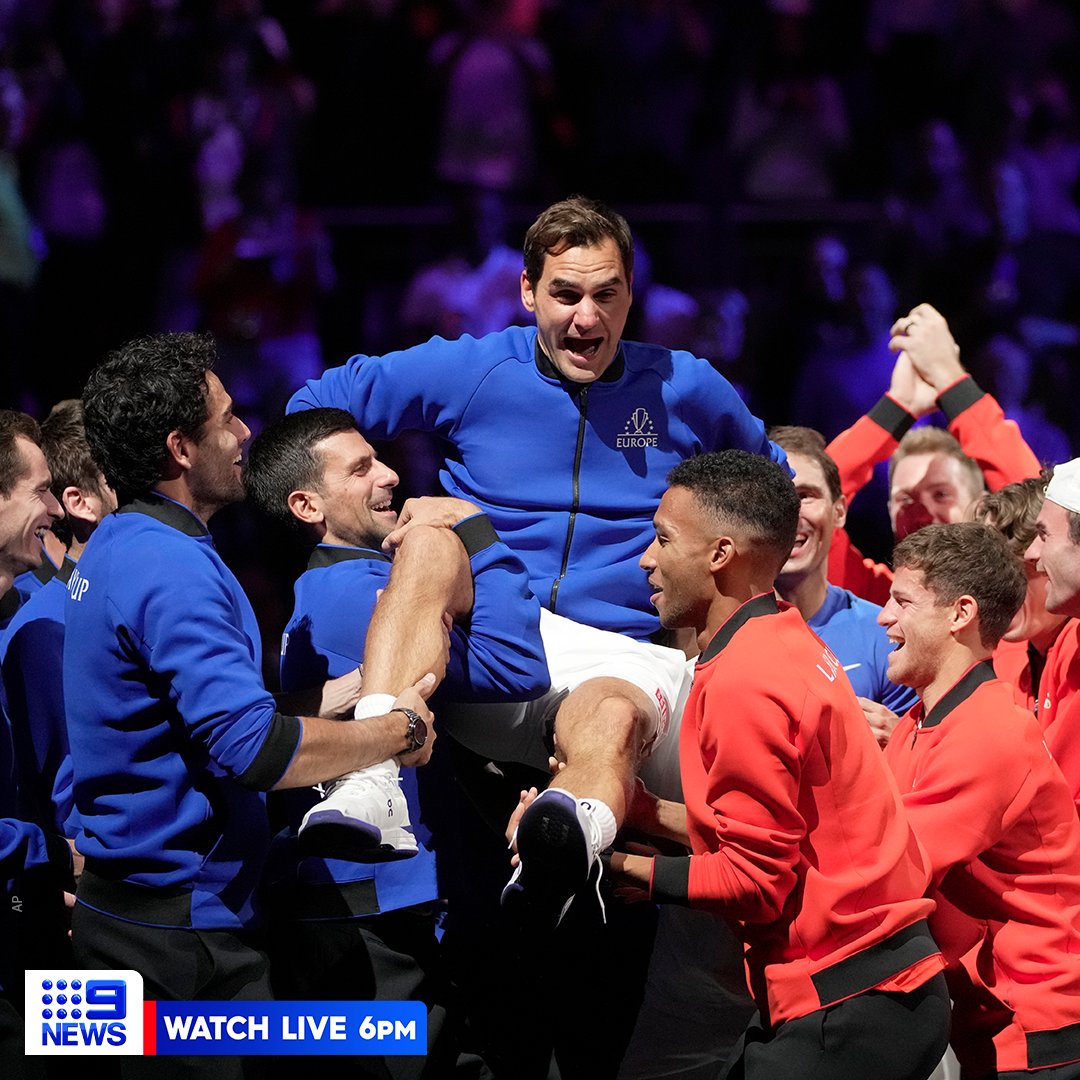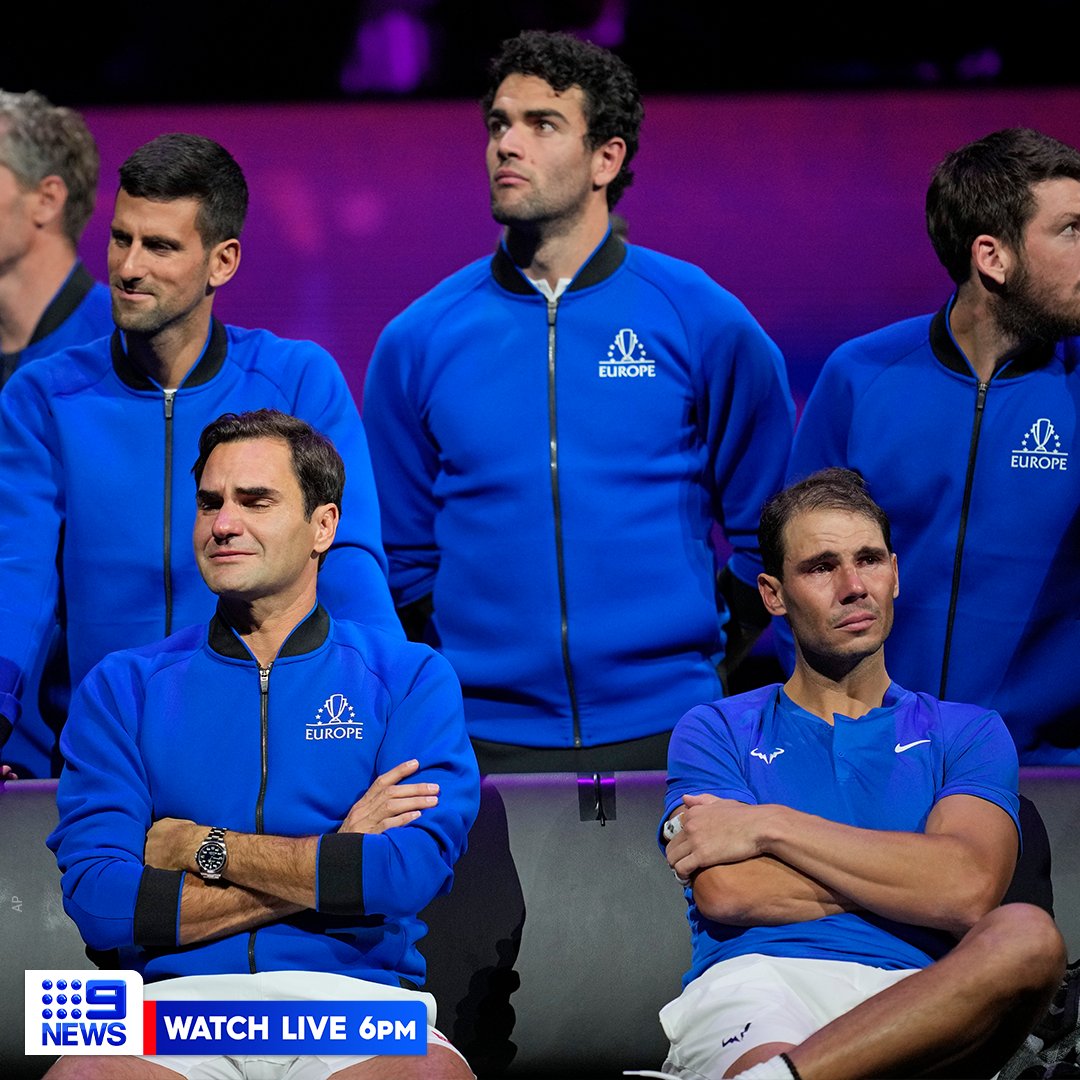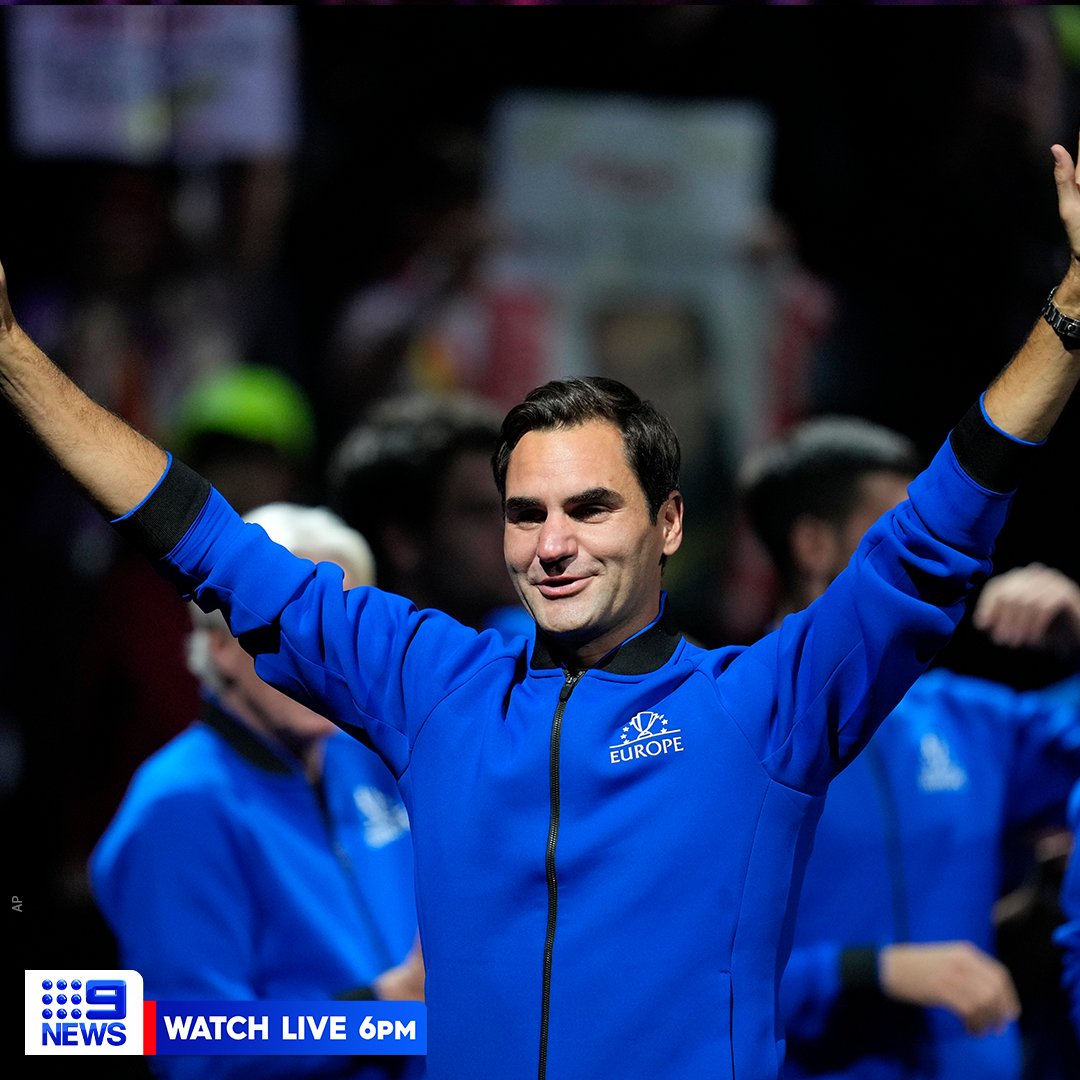This day, this match, had to come, of course, for Roger Federer, and for tennis, just as it inevitably must for every athlete in every sport.
Federer bid adieu Friday night with one last contest before he heads into retirement at age 41 after a superlative career that spanned nearly a quarter-century and included 20 Grand Slam titles and a statesman’s role. He wrapped up his days as a professional player with a loss in doubles alongside his longtime rival Rafael Nadal for Team Europe in the Laver Cup against Frances Tiafoe and Jack Sock of Team World.
The truth is that the victors, the statistics and the score (OK, for the record it was 4-6, 7-6 (2), 11-9) did not matter, and were all so entirely beside the point. The occasion was, after all, about the farewell itself. Or, better, the farewells, plural: Federer’s to tennis, to the fans, to his competitors and colleagues. And, naturally, each of those entities’ farewells to Federer.
“It’s been a perfect journey,” Federer said. “I would do it all over again.”
When the match and, with it, his time in professional tennis, ended, Federer hugged Nadal, then Tiafoe and Sock. And then Federer began crying. There were plenty of tears to go around; Nadal wiped his own away, too. As cascades of clapping and yells of affection came from the stands, Federer put his hands on his hips, his chest heaving. Then he mouthed, “Thank you,” while applauding right back toward the spectators who had chanted, “Let’s go, Roger! Let’s go!” during the concluding moments of a match that lasted more than two hours and ended at about 12:30 a.m.
His wife, Mirka, their four children — twin girls and twin boys — and Federer’s parents joined him on the court afterward for embraces and, yes, more bawling. Members of both teams joined together to hoist Federer up in the air.
“It’s been a wonderful day. I told the guys I’m happy; I’m not sad,” Federer said. “I enjoyed tying my shoes one more time. Everything was the last time.”
The Swiss star announced last week that the three-day team event, which was founded by his management company, would be his final event before retirement, then made clear the doubles outing would be the last match. His surgically repaired right knee — the last of three operations came shortly after a loss in the Wimbledon quarterfinals in July 2021, which will go down as his official exit in singles — is in no shape to allow him to continue.
“For me, just personally, (it was) sad in the first moment, when I came to the conclusion it’s the best decision,” Federer said in an interview with The Associated Press this week about his emotions when realizing it was time to go. “I kind of held it in at first, then fought it off. But I could feel the pain.”
He had said he wanted this to feel more like a party than a funeral, and the crowd obliged, rising for a loud and lengthy standing ovation when Federer and Nadal, who is 36 — each wearing a white bandanna, blue shirt and white shorts — emerged together from a tunnel leading out to the black court for the last match on Day 1 at the O2 Arena. They remained on their feet for nearly 10 minutes, through the pre-match warmup, holding aloft phone cameras to capture the moment.
They came ready to roar for him, some with Swiss flags, some with homemade signs (“Idol Forever” read one), and they made themselves heard with a wall of sound when Federer delivered a forehand volley winner on the match’s second point. Similar reactions arrived merely at the chair umpire’s announcement before the third game of “Roger Federer to serve,” and again when he closed that game with a 117 mph service winner.
“Obviously had 99.9% of the crowd against us. But it was super fun to just be a part of that match. I think we are going to be forever grateful to be a part of the GOAT’s final match,” Sock said, using the acronym for “Greatest of All-Time.”
READ ALSO : Federer Wins Australian Open For 20th Grand Slam Title
Doubles requires far less movement and court coverage, of course, so the stress on Federer’s knee was limited Friday. He showed touches of his old flair, to be sure, and of rust, as to be expected.
There were a couple of early forehands that sailed several feet too long. There also was a forehand that slid right between Sock and Tiafoe and seemed too good to be true — and, it turned out, was: The ball traveled through a gap below the net tape and so the point was taken away from Federer and Nadal.
But the circumstances did allow for moments of levity.
Federer and Nadal were able to laugh after a bit of confusion over which should go for a ball on a point they lost. After Nadal somehow flicked one back-to-the-net shot around the post, only for it to land barely wide, Tiafoe, a semifinalist at the U.S. Open, crossed over to extend a hand with congratulations for the effort.
In the first set, the older duo couldn’t quite hear each other between points, so Federer trotted from the net back to the baseline to consult with Nadal, then pointed to his ear to signal what the issue was.
Before Federer began winning Grand Slam titles in 2003, the men’s mark for most major tennis championships was 14 by Pete Sampras. Federer blew past that, accumulating eight at Wimbledon, six at the Australian Open, five at the U.S. Open and one at the French Open, setting a new standard that Nadal, now with 22, and Novak Djokovic, with 21, equaled, then surpassed, as part of a golden era for the sport.
Perhaps they could have provided everyone with one final installment of a head-to-head matchup as memorable as any in the long history of their sport — or, indeed, any other.
Roger vs. Rafa — just one name apiece required — belongs up there with McEnroe vs. Borg (as it happens, the two Laver Cup team captains, John and Bjorn), Evert vs. Navratilova, Sampras vs. Agassi, Ali vs. Frazier, Magic vs. Bird, Brady vs. Manning, and so on.
Over the years, Federer and Nadal showed off individual greatness and compelling contrasts across their 40 matches, 14 at Grand Slam tournaments, nine in major finals: righty vs. lefty, attacker vs. grinder, seeming effortlessness vs. relentless intensity.
And yet, there was an unmistakable element of poetry with these two men who challenged each other and elevated each other performing as partners, slapping palms and sharing smiles.
This goodbye follows that of Serena Williams, the owner of 23 major singles championships, at the U.S. Open three weeks ago after a third-round loss. It leaves questions about the future of a game he and she dominated, and transcended, for decades.
One key difference: Each time Williams took the court in New York, the looming question was how long her stay would endure — a “win or this is it” prospect.
Friday WAS it for Federer, no matter the result.
All the players will miss him,” said Casper Ruud, who beat Sock in singles 6-4, 5-7, 10-7.
The day’s other results, which left Team Europe and Team World tied at 2-2: Stefanos Tsitsipas defeated Diego Schwartzman 6-2, 6-1 in a match interrupted briefly when an environmental protester lit a portion of the court and his own arm on fire, and Alex de Minaur got past Andy Murray 5-7, 6-3, 10-7.
Due to begin playing shortly after the end of Murray’s loss, Federer and Nadal first provided him with some coaching tips, then watched part of that one on TV together in a room at the arena, waiting for their turn. When Federer and Nadal were in action, it was Djokovic’s turn to suggest strategy.
The last hurrah came after a total of 103 career singles trophies and 1,251 wins in singles matches for Federer, both second only to Jimmy Connors in the Open era, which began in 1968.
At the height of his powers, Federer appeared in a record 10 consecutive Grand Slam finals, winning eight, from 2005-07. Extend that to 2010, and he reached 18 of 19 major finals.
More than those numbers, folks will remember the powerful forehand, the one-handed backhand, the flawless footwork, the spectacularly effective serve and eagerness to get to the net, the willingness to reinvent aspects of his game and — the part of which he’s proudest — the unusual longevity. Beyond the elegance and effectiveness while wielding a racket, Federer’s persona made him an ambassador for tennis, someone whose immense popularity helped attract fans.
“It does feel like a celebration to me,” Federer said before taking a stroll akin to a victory lap around the venue, blowing kisses and waving. “I wanted to feel like this at the end, and it’s exactly what I hoped for.”




-huffpost